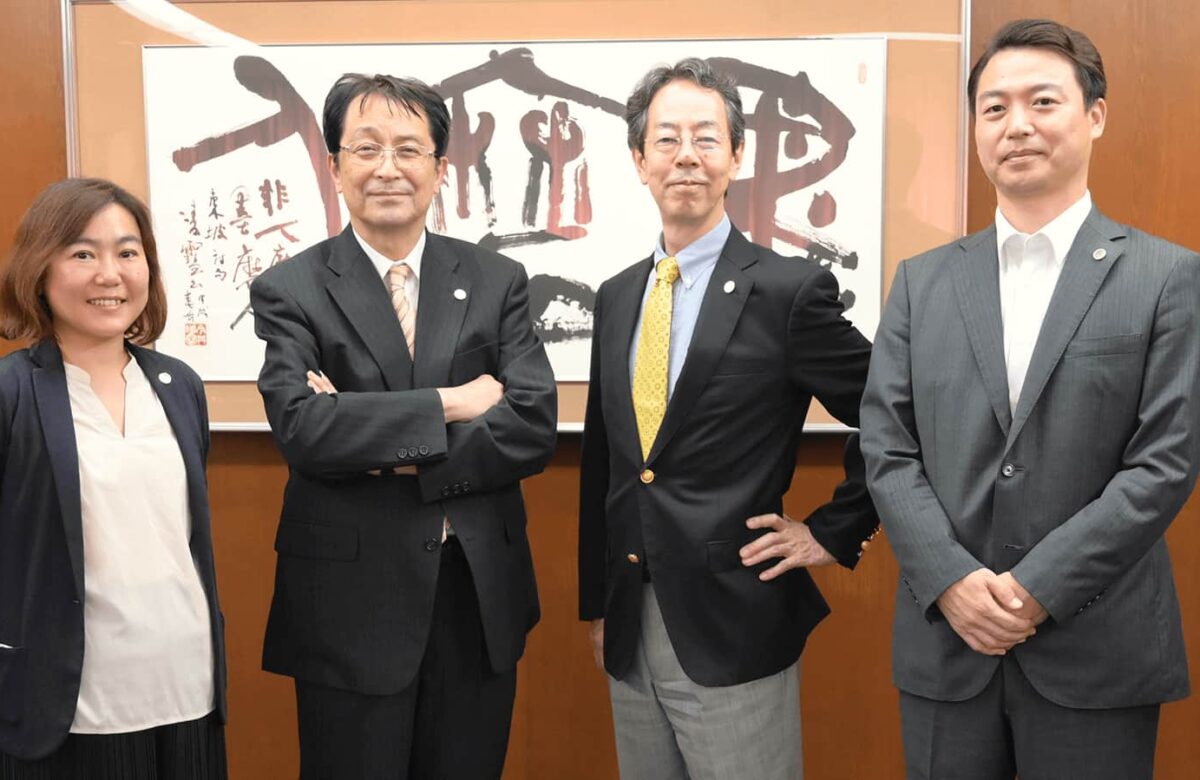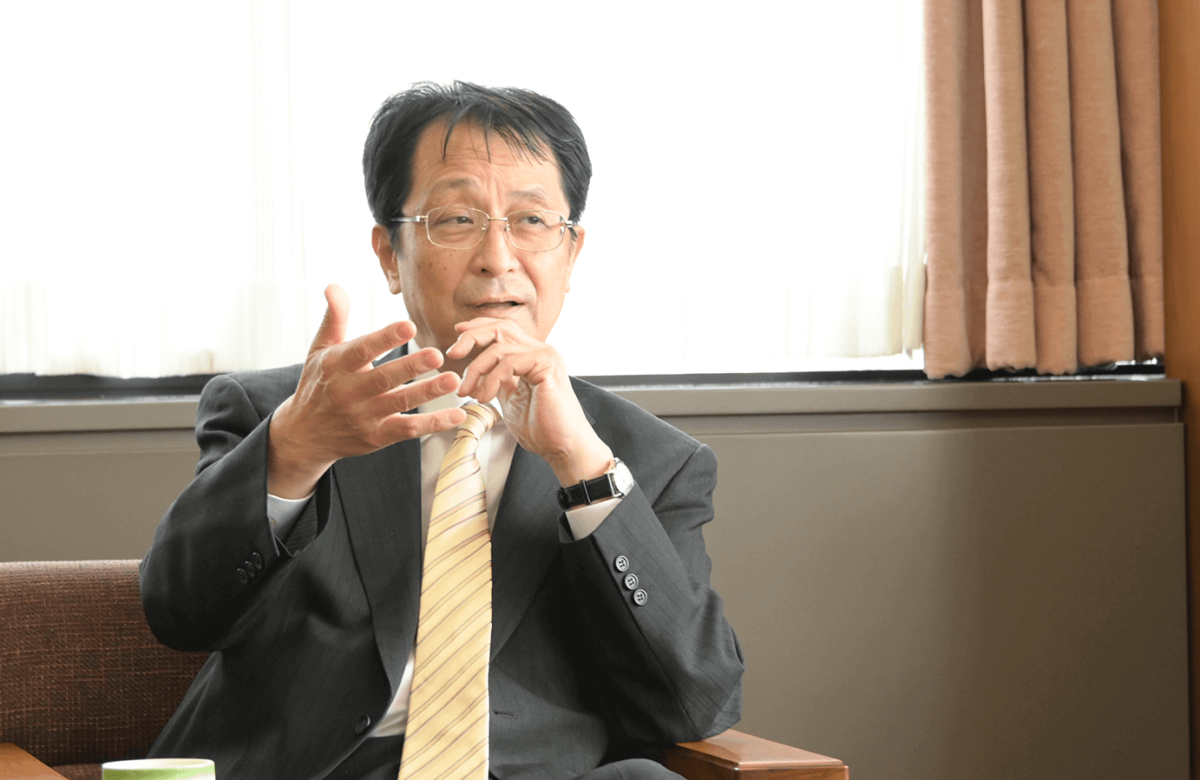Making Scientists Seem Approachable and Creating an Image of a Beloved University
We spoke to Noriko Osumi at the Tohoku University School of Medicine to understand how the university is pushing science communication.
- UniversityArticleInterview
- May 1, 2017

Noriko Osumi, a professor at the Tohoku University School of Medicine, is a well-known name in the industry and is synonymous with neuroscience communication. Alongside conducting research work, Professor Osumi works as head of PR in Tohoku University’s PR team and the Tohoku Medical Megabank Organization, making her someone who can lend strength to Tohoku University’s PR from a scientist’s perspective.
The objective behind having an in-house research communications team
It appears to me that in the past, when pamphlets or other materials were prepared for university PR as mandated by the general affairs department, it was never done with the aim of making the university appealing to its stakeholders. They would merely be budgeted, the number of copies decided, and the rest outsourced. As a result, the various finished products are all over the place and don’t seem connected. This makes them ineffective.
In my opinion, having an in-house communications team addresses this problem for a university. When you do it yourself instead of using a third party, you can think about how to go out and sell the value of what you are doing. There is a lot of merit in having people within the organization working on communications instead of leaving it all up to a PR company. Investing in PR personnel has allowed the PR of the head office at Tohoku University to develop by leaps and bounds over the last five years.
The global communications team in the head office employs two full-time members who are fluent in English and two Japanese nationals who are proficient in the language. These four members liaise with staff from the university head office through a system set up over three to four years after the earthquake. In my opinion, the global communications section of Tohoku University’s website stands head and shoulders above those of other Japanese national universities.
Scientists as pets, and scientific communication
In the context of scientific communication, I am an advocate of the “scientist as pets” theory. By that, I mean scientists basically have a pet-like value to the public. I want them to see scientists as adorable, approachable creatures.
I wouldn’t necessarily stop researchers from hiding away in their laboratories, but I do think we need people who understand the importance of being involved in society. In some industries—like sports and art—everyone involved forms a community. In the scientific world, on the other hand, the impression you get is of a handful of scientists working in isolation on whatever they want. It’s no longer like in the past when scientists had a lot of money to do their research. Today, they use taxpayers’ money, and that’s why it seems important to me to think about how we can make them endearing to the public.
Ever since I worked on the third and fourth MEXT Basic Plans for Science and Technology, I have been arguing from the perspective of the researcher when it comes to the importance of scientific communication. Closer to home, I served as the first head of PR after Executive Director Yamamoto asked for a PR department to be created in the School of Medicine, and this allowed me to strengthen the talent pool working on university PR. Back then, the team comprised scientific communication experts, those responsible for the website, designers, and others. They now work in the PR strategy team for the Tohoku Medical Megabank Organization. I believe my job is to convey the importance of PR from the perspective of the researcher.
Learning about the difficulty of scientific communication when I was young
I was the sort of child who liked to spend his summer holidays working on illustrated diaries or the class newspaper, so I think, at heart, I always had a journalistic approach. Another factor is that my father was a whale researcher.
Commercial whale hunting has been banned for decades, but the reason the US came to Japan in their black boats in the first place was to load up on supplies at a whale hunting base. When Japan-bashing was popular, it became the most convenient way to attack Japan. My father would always participate in global conferences on whale hunting on behalf of scientists, making empirical arguments over many years that the population of whales could be sustained by controlled whaling. But it didn’t matter how scientifically strong the argument was, because public opinion was manipulated by politics. That image of my father battling remained with me throughout childhood. I think my interest in scientific communication also stems from seeing my father like that.
The pros and cons of research communication
The emphasis on research communication has pros and cons. I think one of the problems is that, in some quarters, research is becoming commercial.
I think the effort put in by the research institution into the press conferences held about the STAP research was rare, even within the research industry. If no irregularities had been found and the research had continued, I think there really should have been some developments in the PR for the study. For example, why were Moomin seals stuck on the fridge in the laboratory? Because that year was the 100-year anniversary of The Moomins. That seems like a well-honed PR strategy. The strategy they developed got a popular actress to appear in women’s weeklies and other media that have nothing to do with the research industry. It was absolutely incredible.
I think we need to be concerned about how we should respond to these emerging aspects of commercialism in view of the future of research communications.
The future of Tohoku University and Japanese research communication
The stakeholders of university PR can be divided into three categories. The chief mission of a research university is to engage in pioneering research, so the key players are the researchers and the funding agencies, the next generation of students, and the public.
Tohoku University now does PR that takes the public into account. Their Science Café series has been held may be more than 100 times, and it looks like a grand piano is going to be set up in the hospital mall of Tohoku University Hospital, with monthly concerts for the public. The global communications team is currently looking out for interesting research happening at the university. It plans on writing up press releases and the like to catch the attention of the media. I think they are seeing steady results in the form of media coverage and research findings being used practically.
When you look at what is happening in PR overseas, however, you get the feeling that there is still much to do. For example, Tohoku University is tilted toward the sciences, where 90% of students and staff are working in the sciences, but there still aren’t many members of staff in the university PR department who understand science and can articulate it. Compared with the situation overseas, it’s still rare for universities in Japan to hire professional science writers for their outbound science PR. In my opinion, it would be a step forward for research communications to find more people like this.

NORIKO OSUMI
Noriko Osumi is a professor at Tohoku University Graduate School of Medicine (developmental neuroscience) and Head of PR & Planning at Tohoku Medical Megabank Organization. She graduated from Tokyo Medical and Dentistry University with a master’s in Dentistry. She worked as a research associate at the Tokyo Medical and Dentistry University and as Associate Professor at the National Center of Neurology and Psychiatry before taking up a role as a professor at the Graduate School of Medicine in 1998. She is Director of the United Centers for Advanced Research and Translational Medicine (ART). She specializes in developmental neuroscience.
This article is a part of ScienceTalks Magazine issue The Tohoku Spirit: Endeavoring to Establish a Public Relations Team at the Tohoku Medical Megabank Organization.




